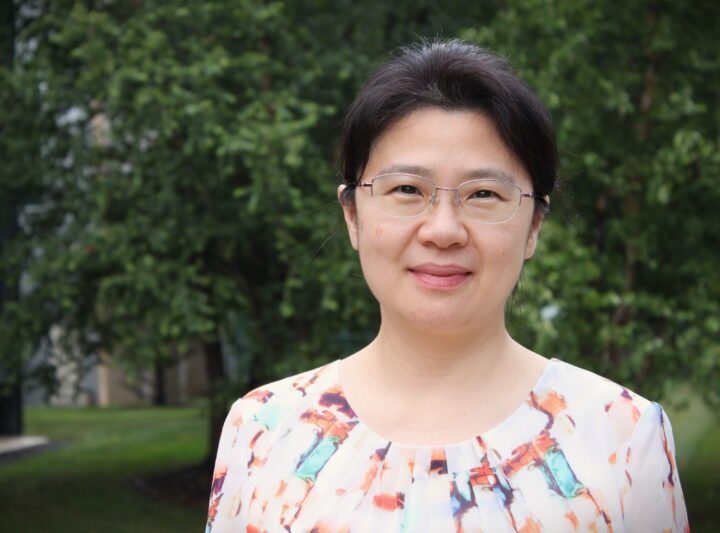March 25th, 2024
GFDL celebrates Women’s History Month by recognizing the contributions of Mingjing Tong, a meteorologist, whose work focuses on improving hurricane and severe weather forecasting.
Dr. Tong, a member of GFDL’s Weather and Climate Dynamics Division, previously worked as a hurricane specialist for NOAA’s National Weather Service. She was also a postdoctoral research associate at the Center for Analysis and Prediction of Storms at the University of Oklahoma, where she pioneered a method for improving the way that observational data is assimilated into weather models to create initial conditions for forecasts.

A childhood interest in severe storms inspired her to study meteorology. Dr. Tong’s career has led her from prediction of small-scale local thunderstorms, with a timescale of hours, to prediction of hurricanes up to 5 days ahead, to development of global models for weather forecasts out to 10 days. Her experience at a NOAA operational center, focused on model development for forecasting, has grounded her research at GFDL – a climate modeling lab where work is aimed at a deeper understanding of weather and climate.
At GFDL her work has a foundation in basic research (understanding the underlying physics of weather phenomena ) but also has practical applications (improving forecast models). She is currently developing a global data assimilation system for GFDL’s SHiELD model and conducting research on data assimilation methods to improve weather forecasts.
This article highlights an interview with Dr. Tong.
What is a moment from your career you feel proud of?
I feel an immense sense of pride reflecting on the years of research, development, and collaboration across various NOAA agencies. One standout moment was in 2013, when the observations from Tail Doppler Radar on a NOAA Hurricane Hunters aircraft was successfully assimilated into the operational Hurricane Weather Research and Forecasting model, a project I had been deeply involved in. This implementation significantly improved hurricane forecasting during that season, marking a milestone in advancing our understanding and prediction of hurricanes.
What sort of progress do you hope to see in your field in the next 5 years?
In the coming five years, I am optimistic about the continued advancement of innovative techniques, particularly those leveraging artificial intelligence, to further enhance the utilization of observations in forecast models for better predictions across various scales. Additionally, I anticipate significant progress in the development and implementation of models like GFDL’s SHiELD, which holds promise for improving weather-to-seasonal predictions. These advancements are crucial for enhancing forecast accuracy across various scales and improving our ability to mitigate the impacts of severe weather events.
What gives you hope, either regarding science, your field in NOAA, or in general?
The recognition of the importance of collaboration, diversity, equity, inclusion, and accessibility within the scientific community, exemplified by initiatives like the Diversity, Equity, Inclusion, and Accessibility Committee at GFDL, gives me hope for the future. Seeing colleagues actively contributing to fostering a supportive and inclusive environment while also making significant contributions to climate research reinforces my belief in the positive impact we can collectively achieve. These efforts not only advance the scientific understanding of our field but also create a more welcoming and productive workplace, ultimately benefiting both the scientific community and society as a whole.


